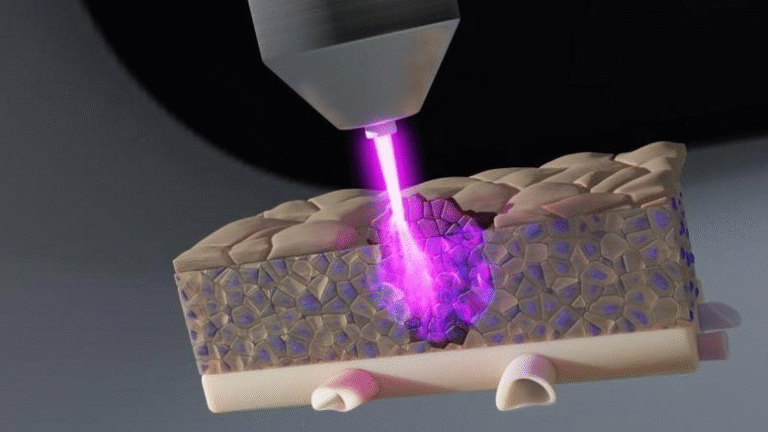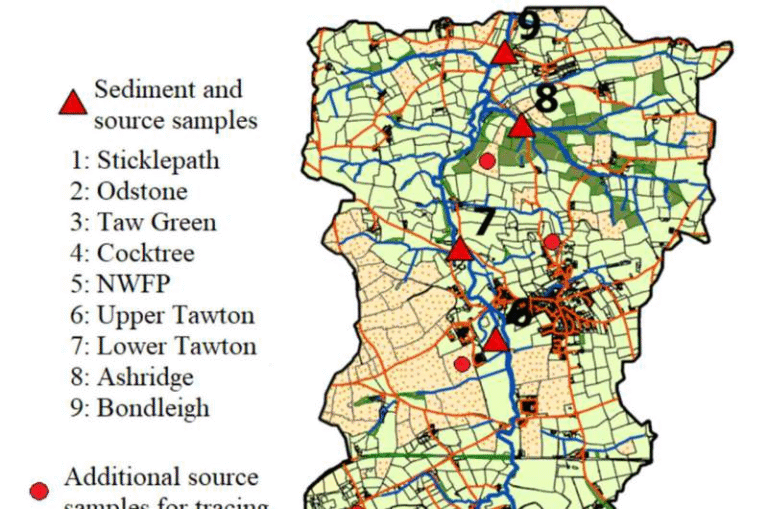What If the Universe Remembers Everything? A Bold New Theory Suggests Spacetime Is a Quantum Memory

For more than a century, physics has been built upon two powerful but mismatched theories. Einstein’s general relativity elegantly describes gravity as the curvature of spacetime, while quantum mechanics governs how particles and forces behave at the tiniest scales. Both work brilliantly in their own realms—but when we try to make them coexist, the equations fall apart.
Now, a group of researchers believes they may have found a new bridge between these two pillars of modern science. Their framework, called the Quantum Memory Matrix (QMM), proposes something radical: spacetime itself might be made of discrete cells that store quantum information, like a universal hard drive that remembers everything that has ever happened.
The Universe as a Memory Network
At the heart of the Quantum Memory Matrix idea is a simple yet transformative assumption: spacetime is not smooth and continuous as Einstein imagined, but instead is composed of countless tiny “cells”. Each of these cells is capable of recording quantum information—a sort of microscopic ledger that keeps track of every interaction, from the movement of a particle to the pull of a force field.
This means that every time something happens—say, a photon passes through a region of space, or a particle collides with another—a subtle change is imprinted on the local spacetime cell. These imprints are like memory traces, recording the quantum details of what occurred. Over cosmic time, these imprints accumulate, and the universe essentially becomes a quantum memory network, where every event leaves a permanent signature in the structure of spacetime itself.
So rather than thinking of the universe as a stage on which events happen, QMM suggests the stage itself remembers what took place.
The Black Hole Information Puzzle
One of the deepest problems in modern physics is the black hole information paradox. According to general relativity, anything that falls into a black hole—matter, light, or information—is lost forever. But quantum mechanics insists that information can never be destroyed.
QMM offers a potential way out of this paradox. When matter or radiation approaches a black hole, the surrounding spacetime cells supposedly record an imprint of everything that enters. So even if the black hole eventually evaporates via Hawking radiation, the information isn’t lost—it’s preserved in the structure of spacetime itself.
The mathematical mechanism behind this is described through something called the imprint operator, a reversible rule that ensures the total information of the universe remains conserved. This approach allows information to survive black hole evaporation without violating quantum principles.
Expanding the Framework: Other Forces Leave Traces Too
Initially, the Quantum Memory Matrix model was developed to describe gravity, but researchers soon discovered that it could apply to the other fundamental forces of nature as well.
In their studies, they found that both the strong and weak nuclear forces, which hold atomic nuclei together, can also leave their own quantum “footprints” in spacetime cells. Even electromagnetism, the force responsible for light and magnetism, has a similar effect: the presence of an electric field changes the quantum state of nearby spacetime cells.
In other words, every fundamental interaction—gravity, electromagnetism, and the nuclear forces—participates in writing information into spacetime.
Geometry-Information Duality
This realization led to a striking new idea called geometry-information duality. According to this principle, the shape and curvature of spacetime are not determined only by energy and mass, as Einstein proposed, but also by the distribution of quantum information—especially through a property known as entanglement.
Entanglement occurs when two particles become correlated in such a way that a change in one instantly affects the other, no matter how far apart they are. QMM extends this concept, proposing that entangled information itself can influence the geometry of spacetime.
This could mean that the mysterious phenomena of dark matter and dark energy, which make up about 95% of the universe, are actually manifestations of information imprints in spacetime.
A New Look at Dark Matter and Dark Energy
In their simulations, the researchers found that clusters of dense information imprints behave exactly like dark matter—they group under gravity, influencing the motion of galaxies without needing any exotic new particles.
Similarly, the team suggests that when spacetime cells become saturated with information, they can no longer record new, independent imprints. This saturation generates a kind of residual energy, which mathematically resembles the cosmological constant—the mysterious force behind the universe’s accelerating expansion, known as dark energy.
In other words, dark matter and dark energy could be two sides of the same informational coin. One arises from the way information clusters, and the other from the limits of how much information spacetime can store.
A Cyclic Universe That Never Truly Ends
If spacetime has a finite memory capacity, an obvious question arises: What happens when it fills up?
According to the QMM team, this leads to a cyclic model of the universe. Instead of a single Big Bang followed by endless expansion, the cosmos might go through repeating cycles of expansion, contraction, and “bounce.”
Each cycle begins with expansion, during which information accumulates in spacetime cells. Eventually, as entropy (disorder) increases, contraction begins. When the universe reaches its maximum information capacity, it cannot collapse further. Instead, the accumulated information forces a bounce, triggering the start of a new expansion phase.
The researchers estimate that our universe has already undergone three or four such cycles, with fewer than ten remaining. When all available information capacity is eventually used up—after roughly 62 billion years in total—the universe may enter a slow, final expansion phase.
Testing the Theory on Quantum Computers
While these ideas sound highly theoretical, parts of the Quantum Memory Matrix have already been tested in real experiments using quantum computers.
In one study, researchers simulated the behavior of spacetime cells using qubits, the fundamental units of quantum information. They implemented imprint and retrieval protocols—essentially writing and reading quantum states—based on QMM equations. Remarkably, they were able to recover the original quantum states with over 90% accuracy.
This not only supports the concept that spacetime could act like a memory system but also has practical applications. When combined with standard quantum error-correction codes, the imprinting process reduced logical errors in the computations.
That means the same theory that might explain the universe could also improve future quantum computers.
A Universe That Computes
From a broader perspective, QMM reimagines the entire cosmos as a vast quantum computer. Every particle interaction, every force, every field contributes to an ongoing calculation, and every result is stored in the memory structure of spacetime.
This view aligns with a growing line of thought in physics that treats information as the most fundamental building block of reality—even more basic than matter or energy. In this picture, reality doesn’t just evolve; it computes, stores, and remembers.
The Quantum Memory Matrix framework doesn’t just propose a new set of equations—it offers a new philosophy of existence: that the universe itself may be a self-recording system, one that carries within it the memory of every event since time began.
How QMM Differs from Other Theories
QMM isn’t the first idea to suggest a discrete spacetime structure. Loop Quantum Gravity, for instance, also describes space as a network of quantized units. However, loop models focus on geometry, while QMM centers on information storage.
Similarly, the Holographic Principle posits that all information in a volume of space is encoded on its boundary surface. QMM breaks from that, suggesting that information is stored locally throughout the volume of spacetime, not just on its edges.
This makes QMM a more bulk-oriented and potentially testable framework.
What Comes Next
The Quantum Memory Matrix framework is still in its early stages. The core ideas are mathematically consistent and promising, but many details remain to be tested.
For instance, the model’s predictions about dark matter, dark energy, and cyclic cosmology need to be compared rigorously with observational data. The theory must also align with precise experiments that confirm Einstein’s relativity at macroscopic scales.
Despite its speculative nature, the theory’s ability to be simulated on quantum computers gives it an experimental foothold that many other theories of quantum gravity lack.
If future tests continue to hold up, QMM could mark the beginning of a new era in physics—one where information is the true foundation of the universe, and spacetime itself is the ultimate archive of reality.





